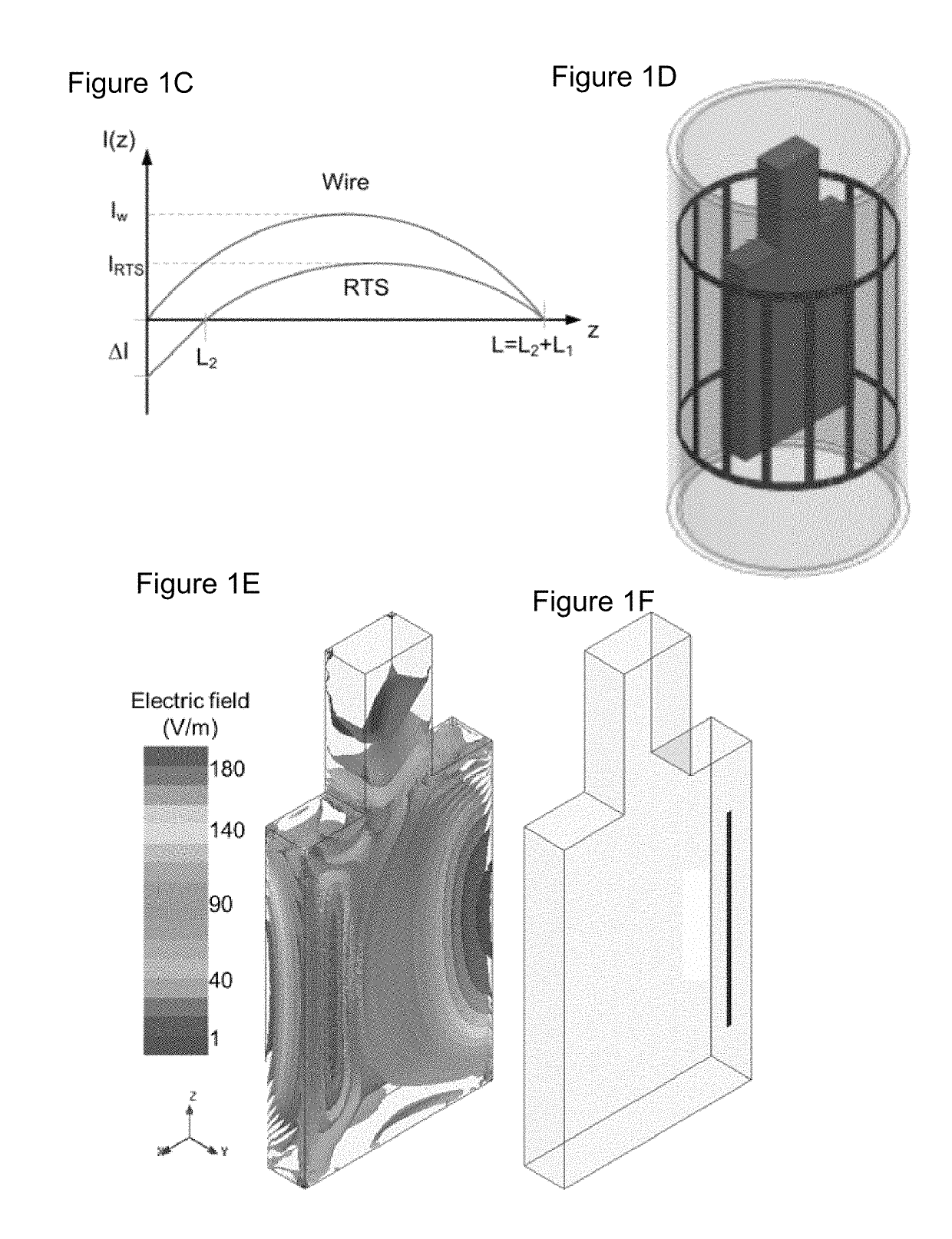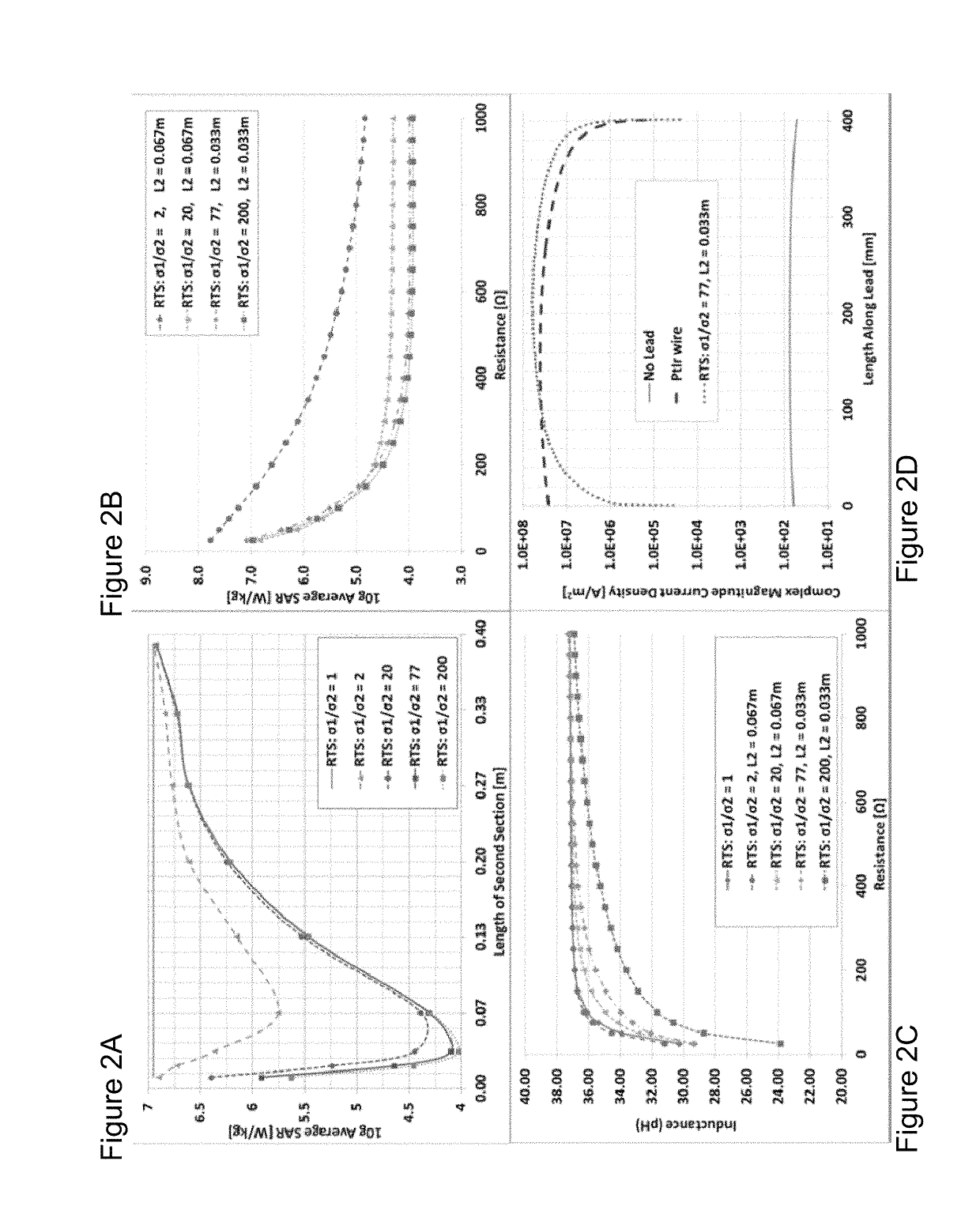MRI compatible leads for a deep brain stimulation system
a deep brain stimulation and compatible technology, applied in the field of lead for an implanted medical device, can solve the problems of large amount of energy to be absorbed in the tissue, limited compatibility of these medical devices with magnetic resonance imaging (mri), standard diagnostic tool in medicine, heat-related injury, etc., to reduce the antenna effect, reduce the effect of tissue heating during mri and limited compatibility with mri
- Summary
- Abstract
- Description
- Claims
- Application Information
AI Technical Summary
Benefits of technology
Problems solved by technology
Method used
Image
Examples
example 1
Methods
[0109]Theoretical background on RTS design. The RTS implant exposed to an RF field can be represented with a hybrid model composed of an antenna attached to a transmission line, which consists of resistive traces with sharp changes in conductivity to maximize reflections, followed by a load such as an electrode connected to the tissue (see FIG. 1a). As described in Ref. 32, the equivalent antenna (i.e., the entire RTS lead) receives the electromagnetic (EM) field and injects it into the first port (i.e., layer) with impedance Z1 of such a network (see FIG. 1b). A portion of the power transmitted to the first port of the RTS is reflected back as a result of an impedance mismatch between the first port and the antenna, while a remaining portion is supplied to the second layer of the RTS. The impedance of this second port is intentionally mismatched to reflect the greatest amount of power back to the implantable pulse generator (IPG) and away from the electrode that is in contac...
PUM
 Login to View More
Login to View More Abstract
Description
Claims
Application Information
 Login to View More
Login to View More - R&D
- Intellectual Property
- Life Sciences
- Materials
- Tech Scout
- Unparalleled Data Quality
- Higher Quality Content
- 60% Fewer Hallucinations
Browse by: Latest US Patents, China's latest patents, Technical Efficacy Thesaurus, Application Domain, Technology Topic, Popular Technical Reports.
© 2025 PatSnap. All rights reserved.Legal|Privacy policy|Modern Slavery Act Transparency Statement|Sitemap|About US| Contact US: help@patsnap.com



